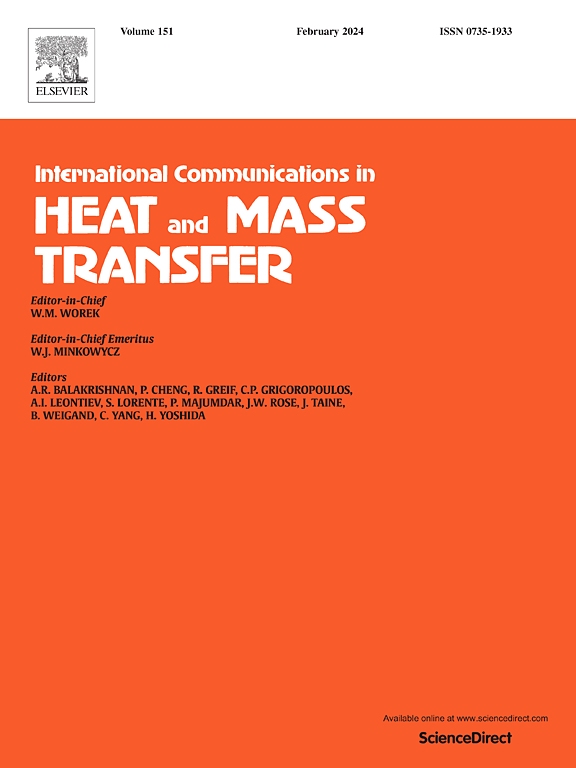Convective heat transfer enhancement through additively built multiscale micro-tetrahedron features
IF 6.4
2区 工程技术
Q1 MECHANICS
International Communications in Heat and Mass Transfer
Pub Date : 2025-03-22
DOI:10.1016/j.icheatmasstransfer.2025.108888
引用次数: 0
Abstract
Use of Additive Manufacturing (AM) to improve the heat transfer characteristics of tip shrouds in high-pressure turbines is being considered by industries. Existing designs of these components integrate micro-cooling channels to reduce the bulk temperature for improved life. In this research, closely packed micro tetrahedron features in addition to AM roughness has been considered. This multiscale surface characteristics increased surface area per unit volume available for heat exchange. Micro-tet features were designed, manufactured, characterized, and evaluated systematically while increasing their height. An enormous increase in the overall wetted surface area by 200 % was measured. The convective heat transfer enhancement was ∼3.72 times EDM rough coupon, and friction factor enhancement was ∼5.5 times EDM rough coupon. Furthermore, the proposed design offers 2.5 times enhanced heat transfer for a given 2 W pumping power compared to our EDM rough coupon. Heat transfer enhancement was observed to not vary strongly with increased Reynolds number. Such complex designs are only possible through additive manufacturing for increased heat transfer with little pressure penalty. Finally, increasing the micro-tet height for increased surface area and improved heat exchange beyond an upper limit might not be a significant benefit as it gets compensated by increasing skin friction.
求助全文
约1分钟内获得全文
求助全文
来源期刊
CiteScore
11.00
自引率
10.00%
发文量
648
审稿时长
32 days
期刊介绍:
International Communications in Heat and Mass Transfer serves as a world forum for the rapid dissemination of new ideas, new measurement techniques, preliminary findings of ongoing investigations, discussions, and criticisms in the field of heat and mass transfer. Two types of manuscript will be considered for publication: communications (short reports of new work or discussions of work which has already been published) and summaries (abstracts of reports, theses or manuscripts which are too long for publication in full). Together with its companion publication, International Journal of Heat and Mass Transfer, with which it shares the same Board of Editors, this journal is read by research workers and engineers throughout the world.

 求助内容:
求助内容: 应助结果提醒方式:
应助结果提醒方式:


